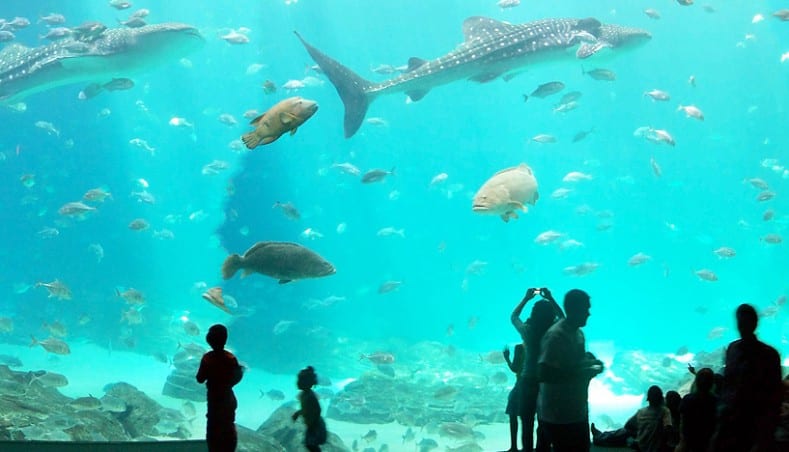Aquarium & Zoological Exhibit Construction – Behind the Life Support System
Posted in News -

Recreating a habitat that resembles an animal’s or marine life’s natural environment in zoological and aquarium exhibits is a major task specialty construction companies are faced with. Sustaining that life is another, and more significant, challenge. A deep understanding and respect for the animals is a must to ensure a safe habitat for each animal. Furthermore, each containment facility should be designed to engage visitors, so they can better understand wildlife and the challenges of preservation and conservation.
The equipment that makes a nonviable environment into one that sustains life is called a LSS, or Life Support System. At the Georgia Aquarium in Atlanta, a team of highly skilled artisans and builders created one of the largest and most technologically advanced pump and filtration systems in the United States. The system contains more than 10 million gallons of water in over 60 habitats. The aquarium’s life support equipment is highly automated and controlled by a state-of-the-art system that can make 150 million decisions per second through a network of 24 computers.
More than 4,500 alarm points in the aquarium’s life support computer system are set to automatically alert technicians to any abnormalities. Included is a secure wireless network that lets the aquarium’s team control pumps, valves and water flow from anywhere in the building. Additionally, the aquarium laboratory staff tests the water quality twice daily to ensure it is safe for all the animals.
Creating an atmosphere that best resembles the aquatic animal’s natural environment is crucial to their survival.
To control the temperature of the environment, a heating and air conditioning system with 4,300 tons of cooling capacity was installed, enough to cool over 1,400 average sized homes. The heating and cooling capabilities of the buildings are designed to maintain tight water temperature parameters in the exhibits to within tenths of a degree Fahrenheit. This is required to provide top-of-the line care to the aquarium’s many aquatic inhabitants.
Georgia Aquarium’s Life Support System was also designed with 91 protein skimmers that simulate a process found in nature used to rid the water of waste. In nature, air bubbles are formed by crashing waves that create foam and carry waste out of the water on the surface tension of the bubbles. In the aquarium, the protein skimmers create similar air bubbles and foam through air injection and clean the water using the same principle.
The different exhibits showcase artificial reefs, rockwork, trees and roots, plus many other features indigenous to the marine life’s natural habitat. By creating such a diverse, life-sustaining environment, we made it possible for the aquarium to meet its goal of becoming a leading facility for aquatic animal conservation and research.
Outside the Lines’ team has a vast knowledge of hydraulic recirculation systems, the proper regulation of temperature and adequate biological, mechanical and chemical filtration can help you create a life support system that will sustain life in any size project. If you would like to work with a team of highly skilled artisans and technicians who have revolutionized themed environments around the world, please contact Outside the Lines at: (714) 637-4747 or email them at info@otl-inc.com
Featured Articles
- What Our Clients Taught Us About Accountability
- 3 Sustainability Trends Expected to Dominate the CRE Market in 2025
- Getting to Know OTL’s Administrative/Accounting Assistant Nathan Touche
- Centers With Well-Designed Experiential Water Features Can Attract 30,000 Visitors Per Week
- Fountains of Light: California Water Features Developer Opens North Texas Office
